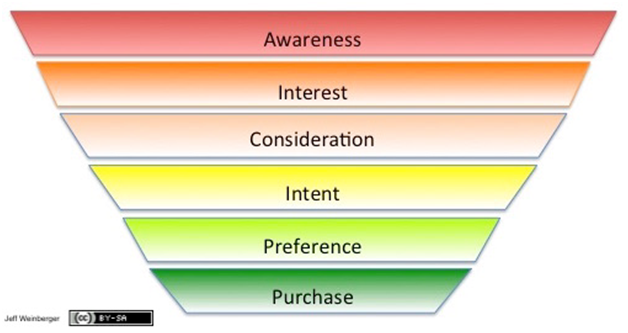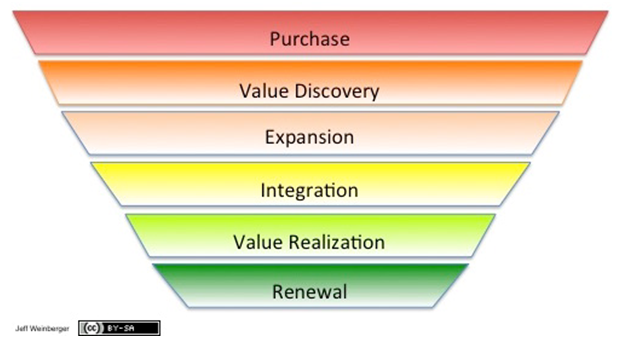Three Ways Data Has Changed the CMO: Two Things to Look Out for and One Glimpse of What’s Next
Posted onOne thing most CMOs seem to agree on is that the availability of data and the ability to process it into information have dramatically shifted the role and effectiveness of marketing in an organization. This data-centric approach to marketing has had several very positive effects on the function, including:
- Increased accountability of marketing within an organization.
- Increased effectiveness of programs with better targeting and knowledge of outcomes.
- Better understanding of the contribution of marketing, resulting in more powerful CMOs.
The Impact of More and Better Data
Data cuts both ways. It can help make decisions. It can show you exactly what is happening in any given operation without introducing bias or opinion. But it can also show you where you are achieving results and where you are not. It can open a very clear window into the CMO’s performance, which allows for evaluation in ways that are far more objective than were previously possible.
Robert Carroll (@robcarroll), senior vice president of marketing for Gild, notes that just seven or eight years ago, “Marketing accountability didn’t exist.” It’s not that there were not metrics, but it was much more difficult to establish hard-data success criteria. With the rise of both CRM systems and marketing automation systems, the data has become available, and it can be turned into analyses that provide these criteria.
One notable way this has changed the marketing organization is in how results are measured. With these systems and their underlying data in place, it is far easier to determine the exact outcomes of any given program, often from initial engagement all the way to closed sale.
While some organizations are still learning how to make this work for them, many marketing teams use a range of outcome measures such as engagement or conversion to determine everything from cost of sales to whether programs have targeted the right market.
This has also given rise to an opportunity to shift the way marketers operate. The availability of hard data showing the effectiveness of specific activities and the speed with which that data becomes available allow marketers to try many different hypotheses about which specific items—such as target audiences, content pieces or messages—will be most effective in achieving any given objective. It lets marketers do the kind of testing and retesting that makes success possible in experimental sciences (such as lab experiments) or in manufacturing design (such as rapid prototyping).
The data and systems are also helping marketers understand media in ways that our profession had only dreamed of. We can tell exactly which media are most effective to carry our messages and reach our desired target. Carroll notes, “Email is still the most effective media for outreach.” But he also has seen a rise, especially with the increasing number of Millennials in both marketing organizations and as members of our target audiences, in the effectiveness of what we might call old-fashioned outreach methods.
“Most Millennials are not used to receiving a telephone call or a postal mailer,” Carroll says. “The sheer novelty of the outreach method is starting to show some unexpectedly positive results.”
While accountability and measurement, in and of themselves, are generally considered good things. The result of this new level of accountability and the success that has accompanied means that CMOs are gaining more power in the organization. Now that it is easier to quantify contribution, it’s also easier to show the exact effect the marketing organization has had on the overall business.
As a result, Carroll points out, “More and more, CMOs are becoming CEOs.”
In my own opinion, this also has the potential to result in organizations that are more focused on serving their markets and building better customer relationships. It certainly will create a different kind of organization than those that followed the historical trend and were led by CFOs or operational executives.
Data Caution!
So far, it’s starting to sound like the rise of the data-based marketer has brought incredibly positive changes and garnered promotions for CMOs. But the rise of data is also fraught with possibilities to go awry for CMOs:
- Measurement measures failure just as effectively as it measure success.
- Data can mislead as easily as it can reveal.
CMOs have jumped on the data bandwagon, and it is, without a doubt, changing their careers. But where marketers were once able to explain away failure of programs with everything from rebranding to fancy footwork, the ability to look at the data can expose exactly where and why programs failed. John Philpin, a serial CEO and author of Beyond Bridges, says “Marketers are being found out.”
Philpin also expresses an opinion common to many of us: “Marketing is as much art as science.” It’s hard to say that just because a program failed, and we can pinpoint the source of that failure, that the error did not lie in our approach, strategy, judgment, or other human-created idea that was an assumption of the program.
Data can also mislead. There’s an old saying that the numbers (if you’re an accountant, or the analysis if you’re a statistician) can say whatever you want them to say. We see this every day in social media where those with specific points of view create charts that appear to be authoritative but are clearly designed to lead the viewer to specific conclusions that benefit the creator. This happens not just with political pundits, but with marketers as well. We would love to convince the entire world that it has the exact problem we can solve. And then, of course, sell them the solution.
The data on which we rely for measuring our own success and for proving our success to our organization suffers from the same limitation. It can be used to show the kind of outcomes we want to believe we have achieved and can be manipulated to hide the outcomes we know will not lead to proving our own effectiveness.
These two concerns—the exposure of failure and the inclusion of human judgment—along with the ability of data to mislead the reader show the limits of reliance on data as the sole measure of success and accountability for a CMO. It is incumbent upon the CMO to know when data will be useful, how it is most useful, and when to rely on it as a measure of success.
What’s Next for CMOs and Data?
CMOs are seeing the opportunities brought by an increased ability to analyze data and are seeking ways to both expand data access and analysis and find more effective ways to understand and use data.
We’ve all heard about the rise of so-called big data, which Carroll calls “too buzzy” and Philpin calls “a misnomer. Philpin goes on to add, “Big data is about the relationship among the data—not the data itself.”
Data gets “big” when there’s lots of it, notably more than traditional databases can handle. But it is just this ability to store and analyze unstructured and often unrelated data that can provide insights into our markets and our customers in ways we are only beginning to see.
Carroll sees how the mass of unrelated data Gild is pulling together has started to show them how best to reach their audience, such as where telephone and postal mail can be effective. He also sees a bigger picture. “Prepare to be disrupted,” he says, “and all of that data can point to a potential disruptor of your business.” Since all businesses are potential targets of disruption, it seems like a valuable use of data.
I also agree with Philpin’s answer to my question, “Have you seen big data work in a marketing effort?” He responded, “Squirrel!” Staring at data for too long can distract you and lead you to conclusions that are mere mirages. You start to see things that are just not really there.
More and better data and data analysis are critical to the future of marketing. Even more critical, however, is the human ability to know how, when, and where to use that data.
Knowing how to turn data into useful information will become more and more important to the success of marketing organizations—and the CMO.

